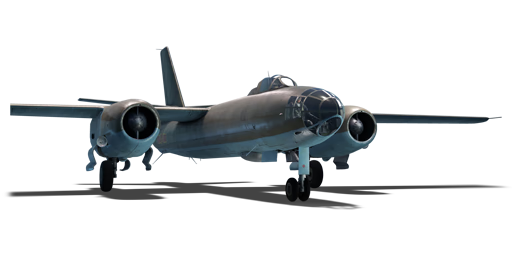



The H-5 (Chinese: 轰-5型轰炸机), manufactured by HAMC, was the first jet bomber of the PLAAF during the 1950s, acting as a direct upgrade from the previous fleet of propeller-driven Tu-2 in the early days of the Cold War. The PLAAF imported a few dozen IL-28s from the Soviet Union, which were using during the First Taiwan Strait Crisis. However, due to deteriorating Sino-Soviet relations and the inability to import the production line through treaties, plans to reverse-engineer the IL-28 were initiated. HAMC made several design revisions, including weight reduction and compatibility with Chinese manufacturing capabilities (which were still lagging behind the mainstream at the time). By 1965, the revised jet was approved for construction and made its maiden flight in September 1966. It officially entered service with the PLAAF in 1967. A total of 507 H-5 bombers were deployed in the PLAAF, some of which were also provided to overseas allies such as Albania and North Korea. Additionally, some H-5s were modified as testbeds for new avionics intended for the JH-7 Feibao and electronic warfare aircraft. The H-5 family was eventually decommissioned, with the JH-7, H-6, and Su-30MKK fulfilling the bomber requirements by 2009.
Introduced in Update 1.91 "Night Vision", the H-5 closely resembles its Soviet predecessor in terms of performance and appearance. It offers a wide range of payload options to engage enemy ground targets, while maintaining sufficient speed for a swift retreat from the battlefield. It is also equipped with self-defense autocannons to fend off any approaching enemy aircraft - a burst from its 23 mm autocannons can easily take down other jets. However, caution should be exercised when facing jets equipped with air-to-air missiles at its tier, as they can eliminate the H-5 from safe distances.
flaps
flaps
flaps
brake
| Belt | Belt filling | Armor penetration (mm) at a distance: | |||||
|---|---|---|---|---|---|---|---|
| 10 m | 100 m | 500 m | 1000 m | 1500 m | 2000 m | ||
| AP-I/FI-T | 31 | 29 | 22 | 15 | 10 | 7 | |
| FI-T/AP-I/AP-I/AP-I | 31 | 29 | 22 | 15 | 10 | 7 | |
| FI-T/FI-T/FI-T/AP-I | 31 | 29 | 22 | 15 | 10 | 7 | |
| AP-I | 31 | 29 | 22 | 15 | 10 | 7 | |
| Belt | Belt filling | Armor penetration (mm) at a distance: | |||||
|---|---|---|---|---|---|---|---|
| 10 m | 100 m | 500 m | 1000 m | 1500 m | 2000 m | ||
| AP-I/FI-T | 32 | 30 | 22 | 15 | 10 | 7 | |
| AP-I/AP-I/AP-I/FI-T | 32 | 30 | 22 | 15 | 10 | 7 | |
| FI-T | 4 | 4 | 3 | 2 | 2 | 2 | |












Flight performance | |
|---|---|
Survivability |
|---|
Weaponry | |
|---|---|